Fast 800 Diet: What it is, how to do it, and recipes for effective weight loss
We ask the experts to explain how the Fast 800 Diet works, and share our top recipes to help you on your weight loss journey.
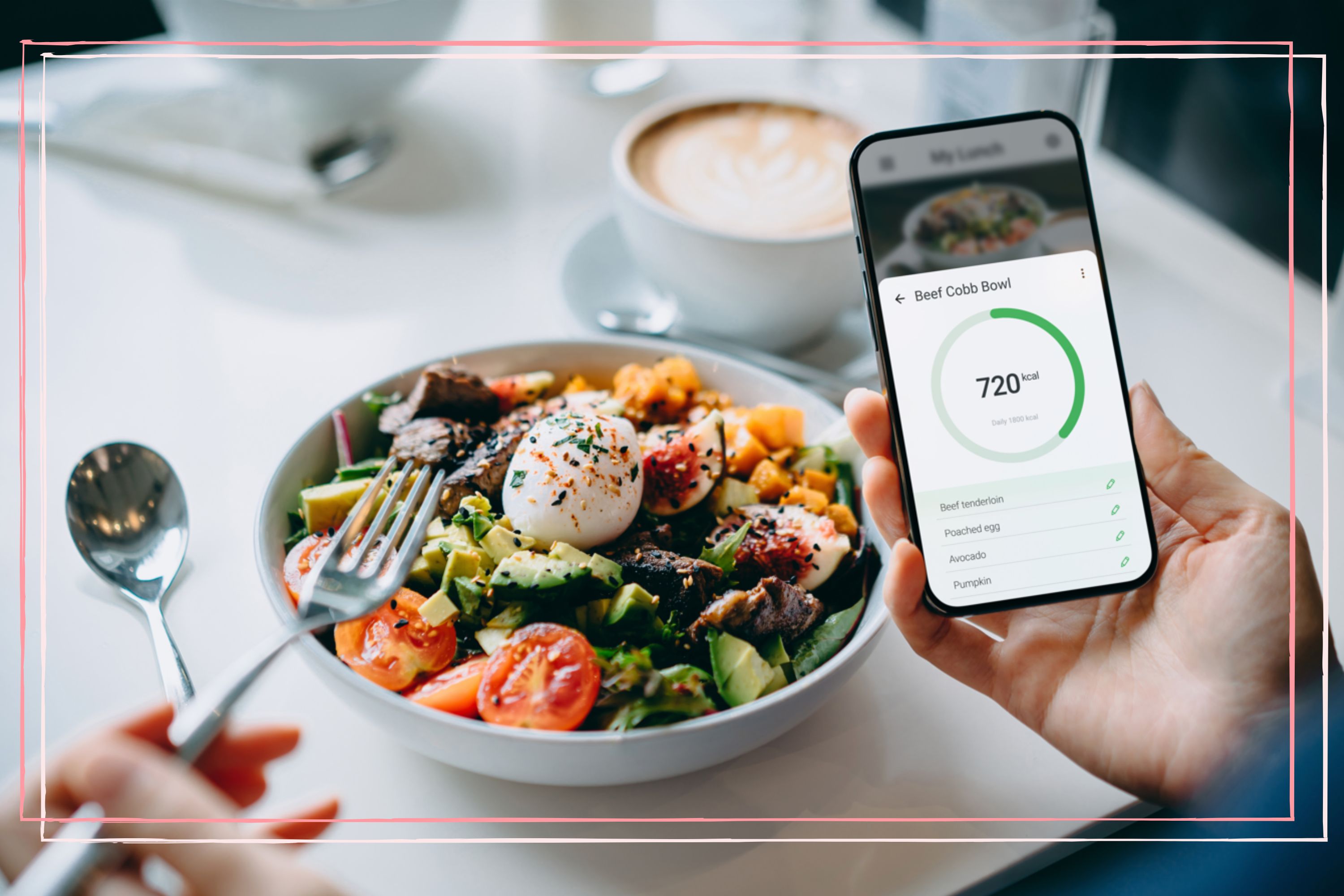

Ellie Hutchings
It's one of the most popular weight loss plans out there - but what is the Fast 800 Diet?
Like the 16:8 diet, the Fast 800 diet is also based on intermittent fasting - it's been praised as one of the most effective way to lose weight, but can also help promote better gut health. Dr Michael Mosley says of his diet plan: "Eating well doesn't just help you lose weight. Good food can boost your immune system, give you energy and even impact your mood."
What is the Fast 800 Diet?
The Fast 800 diet involves cutting your calorie intake to 800 calories a day for the first couple of weeks. You then progress to the 5:2 diet stage – where you’re only required to eat this number of calories for two days a week, while following a healthy and balanced diet on the other five days.
There are two well-known books that dieters follow when on the plan. The first is Michael Moseley's The Fast 800, published in 2018, and the second is The Fast 800 Recipe Book, written by Dr Clare Bailey and Justine Pattison, published in 2019. Both are available on Amazon and they provide insightful information, guidance and recipes, a selection of which you can find further down this page.
The Fast 800 Diet: Stage 1
The first stage of the diet involves sticking to 800 calories a day for at least two weeks. This should induce mild ketosis (a metabolic state that occurs when your body burns fat for energy instead of glucose), much like the keto diet. It is the most intensive stage of the diet and should last for about two weeks.
However, it's not suited to everybody and if this approach is not for you, you can skip ahead to the second stage, the new 5:2.
In addition, the NHS advises that if you are following an 800 calorie diet, you need to make sure it is nutritionally complete and that it doesn't last for more than 12 weeks.
Parenting advice, hot topics, best buys and family finance tips delivered straight to your inbox.
The Fast 800 Diet: Stage 2
When you’re nearing your weight-loss target, eat 800 calories on two days of the week and on the others, follow a Mediterranean diet, exercising portion control.
The Mediterranean diet generally involves eating a large amount of fresh fruit and vegetables as well as a variety of whole grains and a moderate amount of fish. Healthy fats such as olive oil, nuts and seeds, are also encouraged as part of this diet.
During this stage, it's advised you enjoy fewer processed and more home-cooked foods. Sugar should be reduced or avoided, along with starchy carbs, like white bread and white pasta. 45-60g of good-quality protein (e.g. fish, eggs, tofu) should be consumed daily.
Why is stage 2 of the Fast 800 diet important?
On your two fast days, your body will enter a state of ketosis just as it would if you undertook a rapid weight loss plan. With the new 5:2, you will lose fat and aid the function of insulin in turning glucose into energy, which will in turn make it easier for you to keep portion sizes regular during the week.
The new 5:2 also gives those on the plan the chance to experience other fasting benefits, such as apoptosis (clearing out of old or damaged cells), tissue regeneration, reduced risk of cancer, increased metabolic rate (i.e. the amount of energy burned), and decreased inflammation.
The Fast 800 Diet: Stage 3
You’ve hit your goal, so maintenance is key. Make sure you continue to eat sensible portions of moderately low-carb, Mediterranean-style food every day and sticking to a low-sugar diet.
Dr Mosley says, "The Mediterranean diet is one of the healthiest diets on the planet. There is this perception that Italian food is predominantly pasta and pizza, but this is not true. It’s actually packed with fruit, vegetables, nuts, olive oil and fish – all of which are good for you and have been proven to help prevent dementia, strokes, cardiovascular disease, heart disease, and has even in some cases, been known to reverse type 2 diabetes."
Meanwhile, the NHS' Eat Well Guide recommends the following as part of a healthy, balanced diet:
- Eat at least five portions of a variety of fruit and vegetables every day
- Base meals on higher-fibre starchy foods like potatoes, bread, rice or pasta
- Have some dairy or dairy alternatives (such as soya drinks)
- Eat some beans, pulses, fish, eggs, meat and other protein
- Choose unsaturated oils and spreads, and eat them in small amounts
- Drink plenty of fluids (at least six to eight glasses a day)
How to count calories
Calories are listed on food packaging as 'kcal', and you can use the number to count your calorie intake. You can also try weighing your food portions and keeping a food diary to help you work out your calorie consumption.
Or, try using an online calorie counter. These can also help you work out how many calories you burn a day.
The NHS explains, "When we eat and drink more calories than we use, our bodies store the excess as body fat. If this continues over time, we may put on weight.
"Knowing the calorie content of food and drink – and how much we have – makes it easier to keep track of our daily intake."
However, adjusting your portion size and making sure to eat a balanced diet can be just as effective at achieving weight loss.
The recommended daily calorie intake for the average person is:
- 2,500kcal for men
- 2,000kcal for women
However, when trying to lose weight, the NHS recommends that the average person should aim to reduce their daily calorie intake by about 600kcal.
Registered nutritionist Jenna Hope offers a word of caution around calorie counting, saying, "Minor calorie restriction can be an effective way to lose weight in the short term however, it can contribute to a poor relationship with food and isn’t sustainable in the long-term. Long-term calorie restriction can alter metabolic function, which can negatively impact weight management."
So, while you might be restricting your calorie intake during stage two of the Fast 800 diet, bear in mind this will mean you are consuming a far lower number of calories per day compared to that recommended by the NHS, and that this stage of the diet should only be sustained for a short period of time.
Does the Fast 800 diet work?
The Fast 800 Diet has been independently validated by healthcare advisors who work in partnership with NHS organisations, but it's important to remember that everybody is different, and different diet plans work for different people. In addition, to see results from dieting it's important to adjust other lifestyle factors too, such as how much exercise you are doing.
Jenna Hope told us, "Some claims suggest that the Fast 800 diet may help with lowering blood glucose levels and diabetes risk, however it’s not a sustainable diet and there are far more effective, healthy and sustainable approaches to managing disease risk and weight."
Benefits of the Fast 800 Diet
- Reverse type 2 diabetes
- Reduce blood sugar levels
- Weight loss
- Reduced waist circumference
Is the Fast 800 Diet healthy?
The Fast 800 Diet may help with lowering blood glucose levels and diabetes risk, and research has found that there are some health benefits to calorie restriction. For example, a 2022 study from the Yale University Shool of Medicine showed that moderate calorie restriction in participants led to the identification of a gene that is involved in improved immune and metabolic functions.
However, it is worth bearing in mind that the same research found that extreme caloric restriction (a 40% reduction in calories) is associated with impaired immune function, which can lead to more severe infections.
Jenna Hope says, "The Fast 800 diet begins with a very low-calorie diet which can pose a risk of nutritional deficiencies and can leave you feeling hungry. Additionally, it can contribute to a poor relationship with food as individuals can feel deprived. Deprivation can lead to a binge/restrict eating cycle which can have long-term negative effects."
If you experience any of the following while on the Fast 800 Diet, you should stop restricting your calories:
- Low energy levels
- Hair loss
- Constant hunger
- Infertility issues
- Sleep problems
- Feeling cold
- Constipation
- Anxiety
Jenna adds, "Long-term excessive calorie restriction is not a safe way to lose weight, as it can contribute to nutritional deficiencies and impaired metabolic function. Additionally, long-term calorie restriction is not a sustainable method for weight loss and can therefore lead to further weight gain once the individual stops restricting calories."
Fast 800 Diet recipes
Spiced breakfast plums

- Put 4 plums, halved and stoned, in a saucepan. Add 2x 10-12cm orange zest strips and 100ml fresh orange juice, 150ml water and ¼tsp ground cinnamon. Stir gently.
- Bring liquid to a simmer, cover with a lid, reduce the heat to low and cook for 10-15 mins.
- Divide the spiced plums between two bowls, along with 100g full-fat Greek yogurt and 15g toasted flaked almonds. This can be served warm or cold.
NOT FASTING? Add extra toasted flaked almonds.
TOP TIP: This dish works as a dessert too!
233 cals | serves 2
Pear and cinnamon porridge
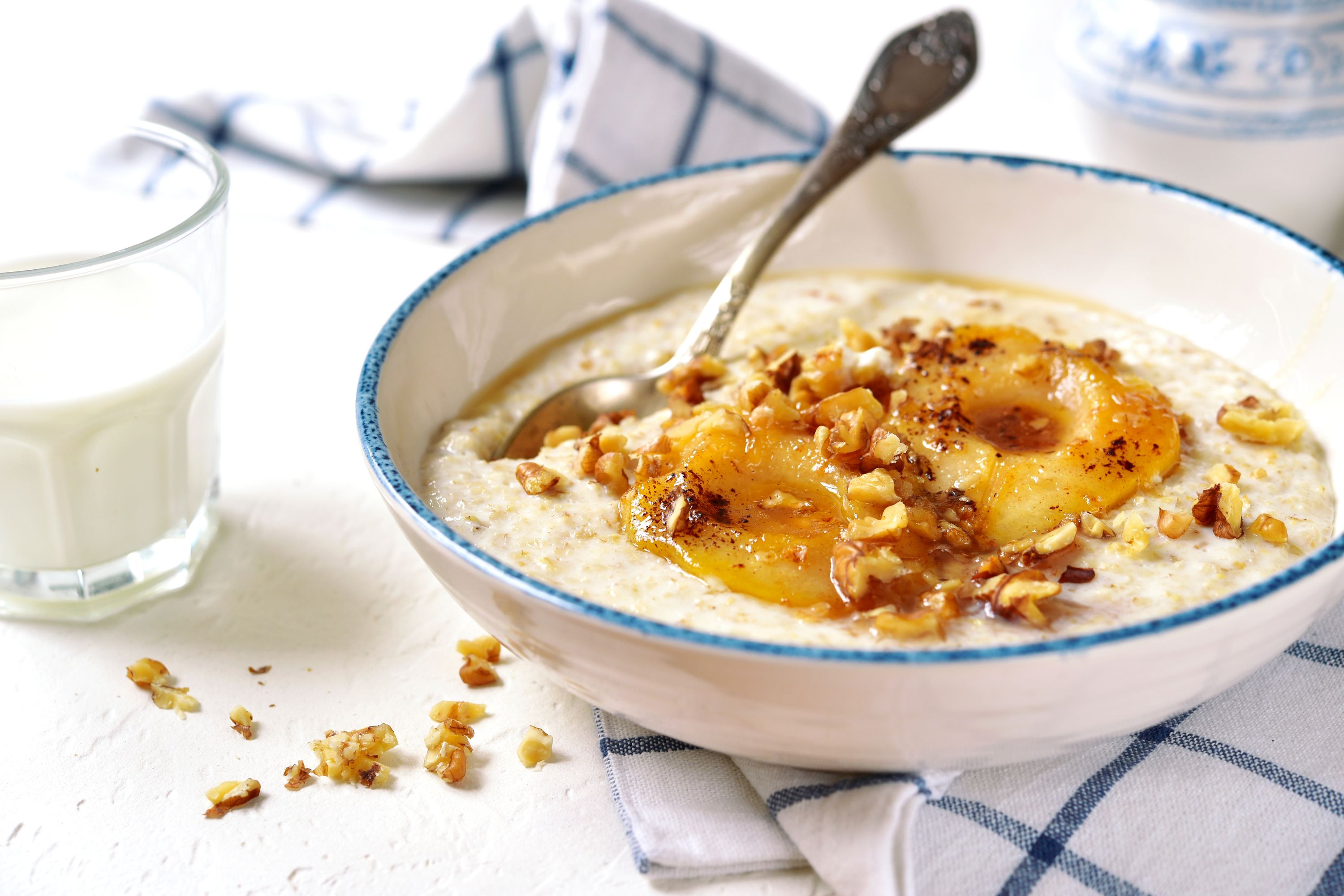
- Place 30g jumbo oats, ½ pear, cored and chopped, and ¼tsp ground cinnamon into a small non-stick saucepan.
- Pour in 75ml full-fat milk and 120ml water and cook over a low-medium heat for 5-6 mins, stirring constantly.
- Pour into a deep bowl and scatter with 5g flaked almonds to serve.
NOT FASTING? Increase the portion size
267 cals | serves 1
Poached eggs with mushrooms and spinach
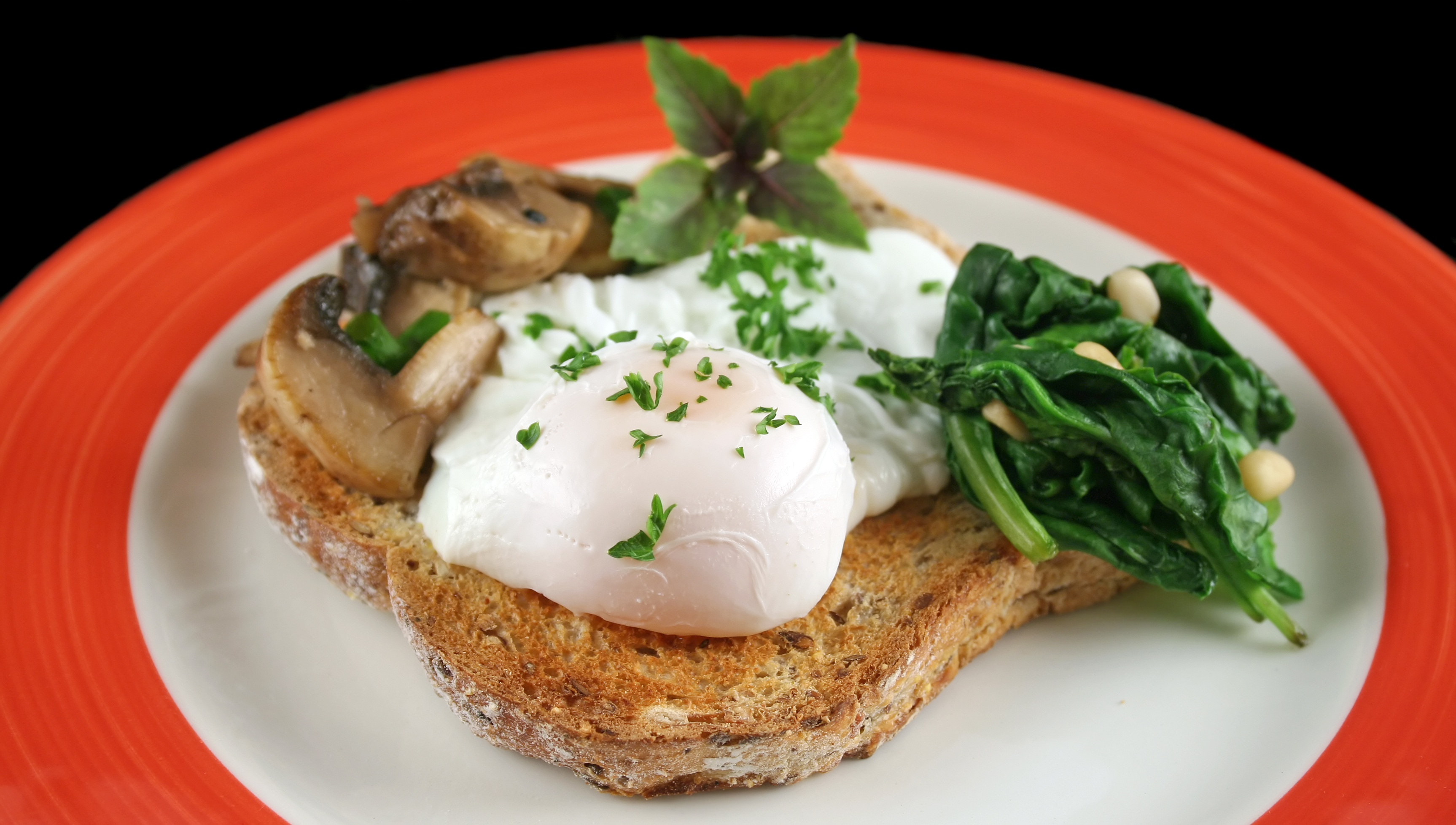
- While poaching the eggs, melt 5g butter in a medium non-stick frying pan over a medium heat and stir-fry 75g small chestnut mushrooms for 2-3 mins.
- Add 50g spinach and toss with the mushrooms until just wilted. Season with a pinch of sea salt and black pepper.
- Serve the mushrooms and spinach on plate. Drain the eggs with a slotted spoon and place on top. Serve with more ground black pepper.
NOT FASTING? Serve on top of a slice of wholegrain toast.
TOP TIP: Other options include avocado, ricotta and mushrooms (with or without toast) - delicious!
241 cals | serves 1
Curried chicken and lentil soup
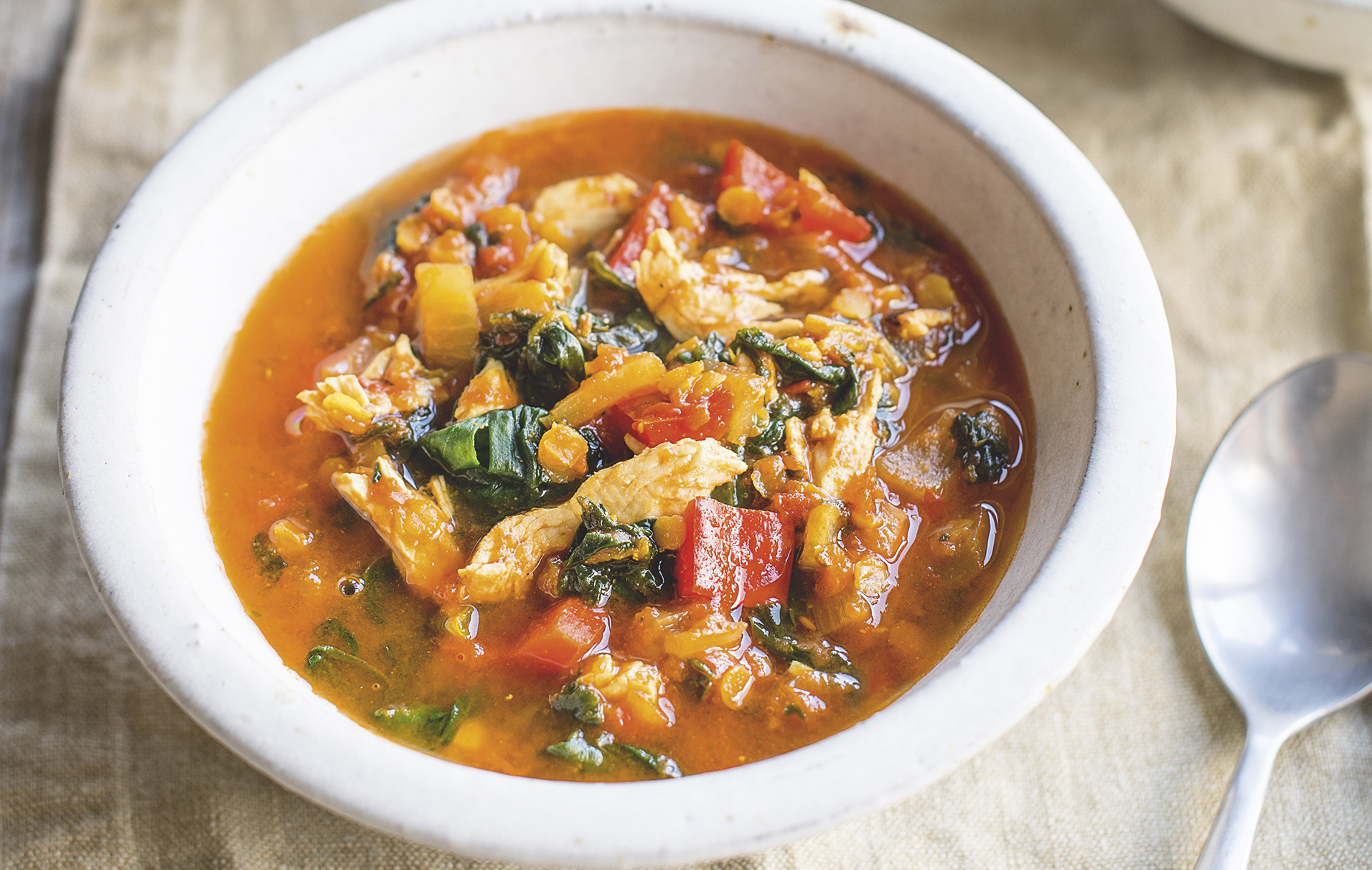
- Heat 1tbsp extra virgin olive oil in a large non-stick saucepan, add 1 onion, peeled and finely chopped, and 1 pepper, deseeded and cut into chunks, and gently fry for 5 mins. Stir in 2tbsp curry powder and cook for a few seconds more, stirring constantly.
- Add 1 x 400g can chopped tomatoes and bring to the boil. Cook for 2 mins, stirring constantly, then crumble over 1 chicken stock cube and add 1 litre of water.
- Rinse 50g dried red split lentils and add to the pan. Stir in 225g frozen spinach and bring to simmer. Season well with salt and pepper. Cook 10 mins, stirring often.
- Add 200g cooked chicken pieces and cook for 8-10 mins. You can add extra water if needed.
- Adjust seasoning to taste and serve with lemon wedges for squeezing over.
NOT FASTING? Top with 2tbsp of toasted flaked almonds and 1tbsp of full-fat Greek yogurt.
223 cals | serves 4
Edamame and tuna salad

- Tip 200g frozen edamame beans into a heatproof bowl and cover with just-boiled water from a kettle. Stir and leave for 1 min to allow the beans to thaw. Drain and rinse under cold water.
- Place the beans, 2 spring onions, trimmed and thinly sliced, 1 x 110g no-drain tinned tuna and 15g parsley in a bowl and use a fork to flake the tuna.
- Drizzle 1½tbsp cider vinegar and 3 tbsp olive oil over the salad, then season with salt and pepper and toss together well.
- Just before serving, add 2 large handfuls of rocket and toss lightly.
NOT FASTING? Increase the portion size.
408 cals | serves 2
Asparagus, pea and mint frittata muffins
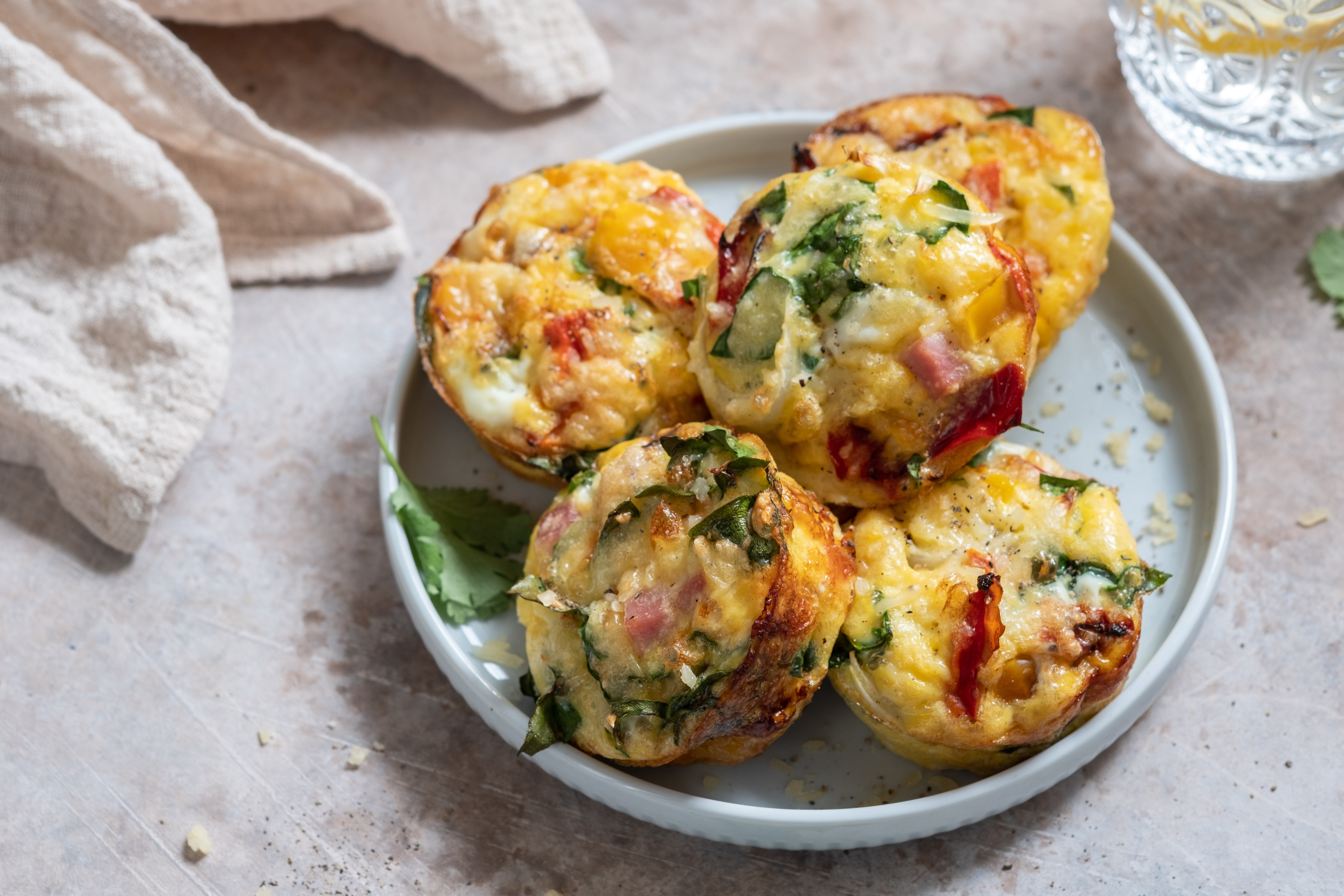
- Preheat the oven to 200C/fan 180C/Gas 6 and generously oil a deep, six-hole muffin tin. Cut six roughly 10cm square pieces of non-stick baking paper and use to line the tins, leaving the excess paper peeking over the sides.
- Third-fill a large pan with water and bring to the boil. Add 150g asparagus, trimmed and cut into 2-3cm pieces, and cook for 4 mins. Add 100g frozen peas and cook for 1 min more. Drain the vegetables and tip into a large bowl with 4 spring onions, trimmed and thinly sliced, and 3-4 tbsp chopped fresh mint.
- Beat 6 large eggs in a separate bowl with a good pinch of salt and pepper.
- Divide the vegetables between six muffin cases and top with 65g feta chunks.
- Pour the egg over the vegetables, then bake in the oven for about 20 mins.
NOT FASTING? Increase the portion size.
154 cals per muffin | serves 6
Speedy pizza

- Preheat grill to medium-hot setting. For the pizza topping, tip ½ a 400g can of chopped tomatoes into a sieve and shake to remove any excess juice.
- Transfer the tomato pulp to bowl and stir in 1 tbsp tomato purée and ½tsp dried oregano. Season with salt and pepper.
- Lightly toast 1 wholemeal pitta bread, place on a board and carefully cut in half horizontally with a bread knife. Separate the two pieces, place on a baking tray, cut side down.
- Spread the pitta halves with tomato sauce and top with 2 roasted red peppers from a jar, drained and sliced, and 2 chestnut mushrooms, very finely sliced.
- Sprinkle with 35g grated mozzarella, drizzle with 1 tbsp olive oil and place under the grill for 4-5 mins.
221 cals | serves 2
Sausages with onion gravy and cauliflower mash

- For the cauliflower mash, half-fill a medium pan with water and bring to the boil. Add 1 medium cauliflower, trimmed and cut into small florets and return to the boil. Cook for 15-20 mins or until soft. Drain, then return to the pan. Add 1 tbsp olive oil, a couple of pinches of salt and lots of ground black pepper, then blitz in a food processor until smooth. Keep warm over a very low heat, stirring occasionally.
- Meanwhile, heat 2 tbsp olive oil in a large non-stick frying pan and gently fry 12 chipolata sausages for 5 mins, turning regularly. Add 1 onion, peeled and thinly sliced, and cook for a further 8-10 mins.
- Stir in 300ml hot chicken or pork stock and 2tbsp reduced-sugar tomato ketchup and bring to simmer. Mix 2 tsp cornflour with 1 tbsp cold water in a small bowl and stir into the pan. Season with pepper and simmer for 1-2 mins. Adjust the seasoning to taste.
- Divide the cauliflower mash between four warmed plates and top with the sausages and gravy.
NOT FASTING? Increase the portion size and add a generous knob of butter or grated Cheddar to the cauliflower after blending, and mix thoroughly.
367 cals | serves 4
Spicy bean chilli
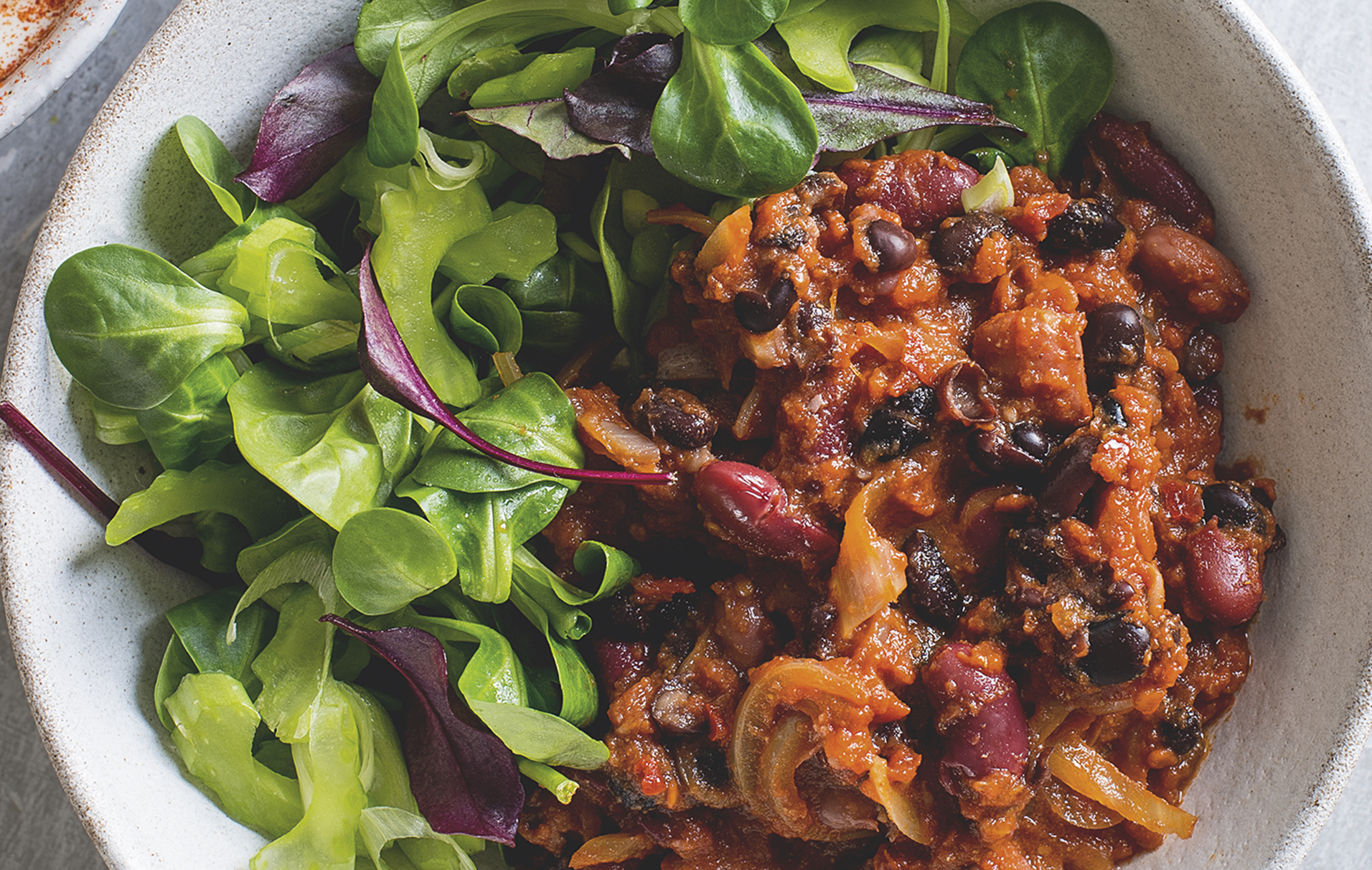
- Heat 2 tbsp oil in a large, deep, non-stick frying pan, and gently fry 1 peeled and sliced onion for 3-4 mins.
- Add 1tsp smoked paprika, 1 tsp cumin and 1 tsp ground coriander and cook for a few seconds, stirring well.
- Add 1 x 400g can of chopped tomatoes, 1 x 400g can of drained black beans and 1 x 400g can of drained mixed beans, 250ml vegetable stock, 1 tbsp tomato purée and 1 tsp mixed dried herbs, season with salt and pepper and bring to simmer. Cover loosely with lid and cook for 15-20 mins, stirring occasionally.
- Serve topped with a sprinkling of cheddar (75g in total) and generous spoonfuls of full-fat Greek yogurt.
NOT FASTING? Serve with cooked brown rice and top with sliced avocado.
346 cals | serves 4
Almond and raisin chocolate pennies

- Line a baking tray with non-stick baking paper.
- Break 100g plain dark chocolate into squares and place in a bowl over a pan of gently simmering water. Make sure the base of the bowl isn’t touching the water. Leave to melt for 5 mins, stirring occasionally.
- Carefully remove the hot bowl from the pan and, using a teaspoon, pour individual spoonfuls of melted chocolate onto the tray, spaced well apart.
- Scatter 25g flaked almonds and 25g raisins on top of the melted chocolate. Leave to set for 2-3 hours.
- Place in an airtight container and store for up to a week in a cool place.
38 cals per penny | Makes 20
The Plan is a calorie-controlled diet. Individual results will vary. If you are adolescent, pregnant, breastfeeding, have a medical condition, or are unsure in any way then talk about your weight-loss plans with your doctor or dietician.
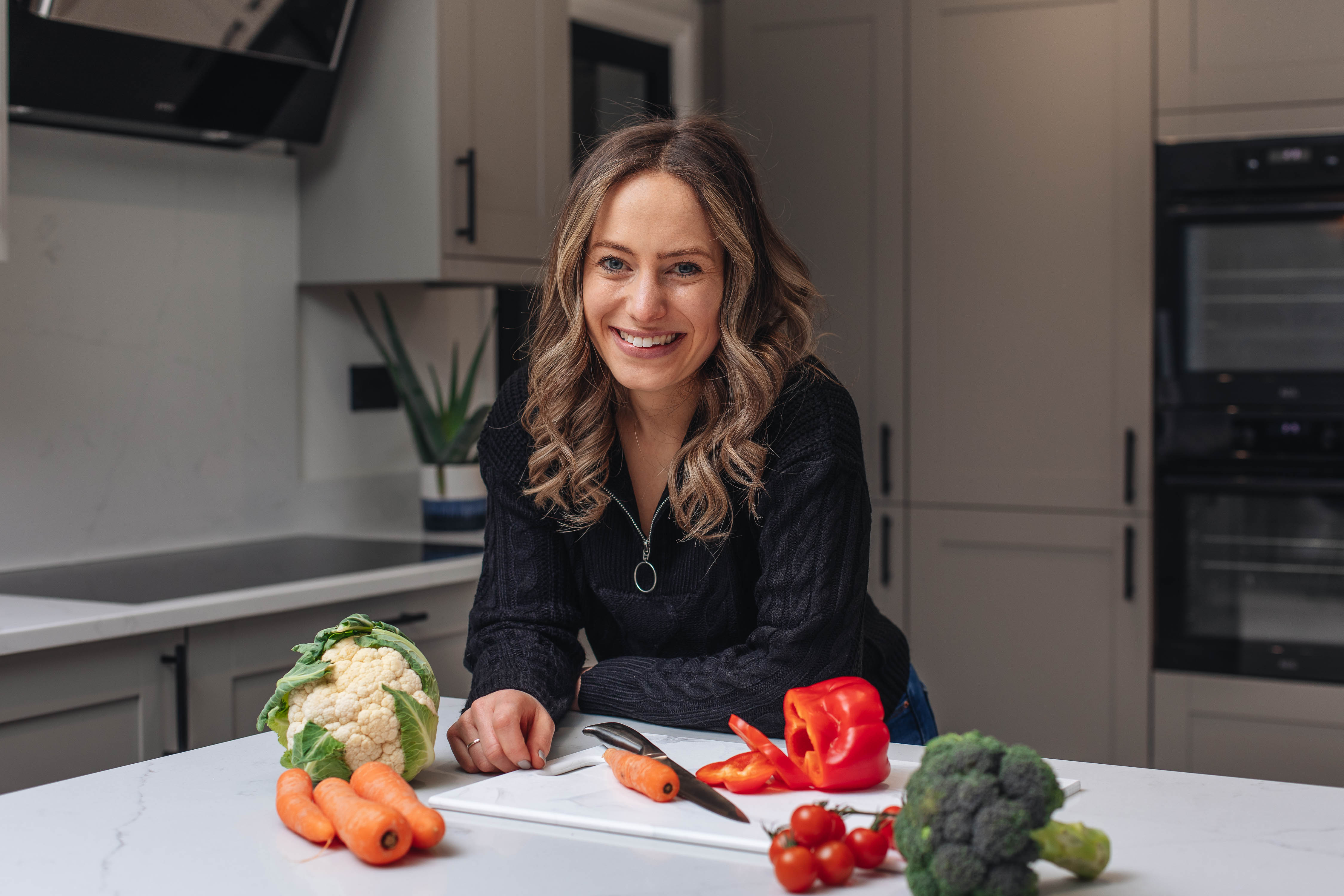
Jenna Hope is a Registered Nutritionist with an undeniable passion about making nutrition smarter, clearer and simpler, she provides quick, easy, nutrition advice which you can implement everyday. Founder of Nutrition consultancy firm Jenna Hope Nutrition, Jenna works closely with individuals, corporate clients and brands to implement smarter strategies for nutrition and to support health and wellbeing for the long-term.
If you're trying to find the best diet for you, you might want to check out the 7-day detox plan, the eight-week weight loss plan or the 1,000-calorie meal diet. We've also rounded up the most extreme diets out there - though you might want to stay away from these - and celebrity diets too.

Freelance writer Lucy Gornall is the former health and fitness editor for various women’s magazines including Woman&Home Feel Good You. She has previously written for titles including Now, Look and Cosmopolitan, Woman, Woman's Own, Woman's Weekly and Chat. She lives and breathes all things fitness.
- Ellie HutchingsFamily News Editor